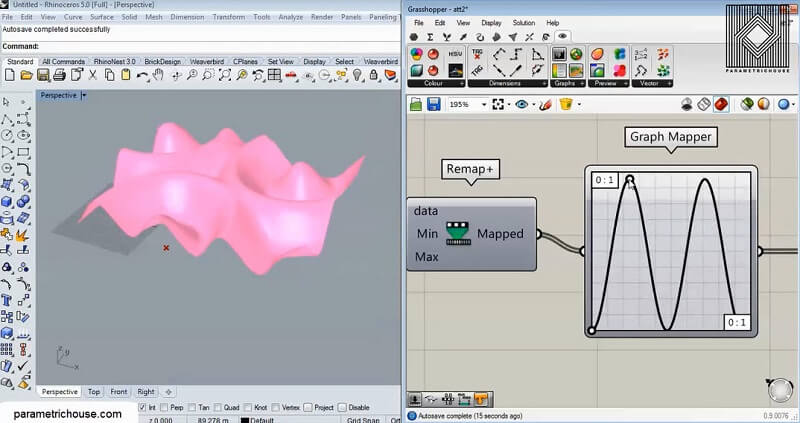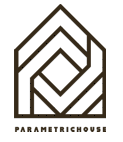2- Multiple Attractor Points
In this Grasshopper tutorial, we will understand what happens when we use two or more points as an attractor and how it affects our grid of points.


In this Grasshopper tutorial, we will understand what happens when we use two or more points as an attractor and how it affects our grid of points.

20 Minutes
80 MB


In this Grasshopper Dendro example file, you can use the Trap Field component from the Heteroptera plugin to generate a series of random connecting curves between two faces.
In this Grasshopper tutorial for beginners, you can learn how to model a parametric box ring from scratch without using any plugins.
In this Grasshopper Kangaroo example file you can design a parametric earring using the circle packing technique.
In this Grasshopper example file you can design a parametric Louver facade using the Pufferfish Plugin.
In this Grasshopper example file you can design a parametric building using the native grasshopper components.
In this Grasshopper Dendro tutorial, you can learn how to create a growing mesh by defining a series of spin fields on a NURBS surface using the Heteroptera plugin.
In this Grasshopper Tutorial for beginners you will learn how to use the Sphere collide component to generate evenly distributed holes on a NURBS surface.
In this Grasshopper Kangaroo example file, you can circle pack a mesh using the "TangentIncircles" component.
In this Grasshopper example file, you can utilize the Nautilus plugin to design a parametric Twisted Torus.
In this Grasshopper example file, you can model twisted torus strips and convert them into a spaceframe and panels using the Lunchbox Plugin.
In this Grasshopper example file, you can convert a series of curves into a mesh with a 3d groove pattern using the Nautilus and Weaverbird plugins.
In this Grasshopper tutorial, you will learn how to model a parametric joint on the corners of a box with controllable parameters.
In this Grasshopper example file, you can simulate an optimized path from an origin point/points toward a set of targets. The strategy involves branching at diverging points.
In this Grasshopper example file, you can model a staircase detail drawing from the plan view and easily change the parameters.
In this Grasshopper example file, you can design a parametric facade using four different techniques.
In this Grasshopper contour tutorial, we will learn how to extract a series of solids from a part of a mesh by defining the direction and length with a single line.
In this Grasshopper Millipede tutorial, you can learn how to model a series of smooth connecting columns to a roof and then analyze it using Millipede's Finite Element Analysis.
In this Grasshopper Kangaroo tutorial, you can discover how to simulate the flow of a series of particles on a solid and then convert it into a mesh.
In this Grasshopper tutorial, you can learn how to generate Perlin noise on a surface and convert it into a solid.
In this Grasshopper tutorial, we will learn how to generate a structural grid from a series of grid points.
In this Grasshopper tutorial, we will explore how to create a simple parametric gear and a radial mechanism, and also include an example file for the Iris mechanism.
In this Grasshopper tutorial, we will learn how to create a series of parametric solids using the "Tangent Arcs" component.
In this Grasshopper tutorial, we will model a parametric brick wall on a NURBS surface with a rectangular projection. We can also adjust the thickness of the bricks based on point attractors.

Comments
Cowportal
Good afternoon! On time 00:49, how did you delete all the nodes and connections and still managed to keep the “Group of points” intact? When I delete, the relationship is lost and the “group of points” is simply vacant. Thank you!
rezae
Hi,
I think you accidentally deleted the real points in Rhino!
You can lost the relation only if you delete the component or clear the value inside the component
Good luck!
Cowportal
Its ok I figured it out. I had to right click on the “group of points” node and click “internalize data” in order to keep the rectangular array and the 20-by-20 count. Thank you.
rezae
Hi,
Yes! that’s great.
Good Luck!
TBiagi
Attachment MultipleAttractorsTutorial.jpg
Hello
In this tutorial I had a hard time figuring out how to get a grid of points with just one point component, it would be awesome if you explain that at the beginning.
I am attaching a jpeg image because I can’t get the surface right. When I put the 25 U Count in the Number slider I get nothing and only at two I get numerous surfaces. Please explain, thanks
rezae
Attachment Teresa-multipleattractors.zip
Hi Teresa,
you have add one unit to the U Count because when you’re extracting point from the surface, the U Count in the Divide Surface means number of slices not number of rows or columns so you have to add one unit to generate surface from points
I’ve also attached a file which can explain more
Many thanks.